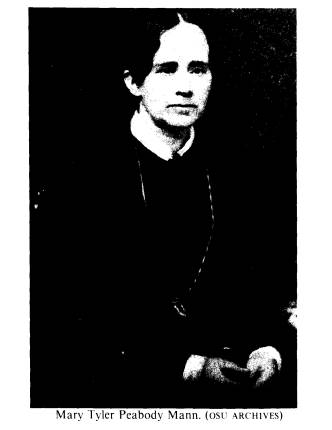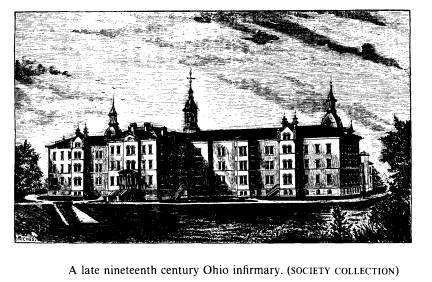Ohio History Journal
edited by
FRANK R. LEVSTIK
Life Among the Lowly:
An Early View of an Ohio Poor House
The care of the poor in Ohio during the
early nineteenth century was
largely based on English legislation of
the sixteenth, seventeenth, and
eighteenth centuries. In 1795 statutes
of the Northwest Territory provided
a means whereby the poor could be
employed through a system of annual
farming-out to the lowest bidder. The
"farmers" were thus authorized to
keep the poor at moderate labor. For the
next two decades, various
modifications on this plan were used for
the care of the destitute. By virtue
of an Act of February 26, 1816, Ohio
counties received authorization to
establish poor houses wherever it seemed
"proper and advantageous." The
creation of the county poor house, or
indoor relief system, moved with the
tide of immigration, general economic
conditions and the rise in the
numbers of the helpless and destitute.'
In one Ohio county, Greene County,
implementation of the 1816 act did
not take place until 1827. During that
year. county officials purchased a
hundred acre tract, a mile and one-half
west of Xenia. where a brick
building sixty feet long and eighteen
feet wide, and one story tall was
erected to provide for Greene County's
indigent populace. Less than two
decades later, the county's needs
required replacement of the structure. In
1840 Greene County built a two-story
brick structure forty-by-one hundred
feet to replace the older building.
Subsequently, a wing was added to the
building, and then a structure for the
confinement of the mentally ill.2
Records of conditions in Ohio poor
houses prior to the Civil War are
rare so that a letter on the Greene
County Infirmary and its conditions
addressed to Governor Salmon P. Chase is
extraordinarily enlightening.
The following letter, reproduced in its
entirety from the Salmon P. Chase
Papers in the Archives-Manuscripts
Division at the Ohio Historical
Society, provides a fresh look into the
loathsome state of the poor house
Frank R. Levstik is the State Archivist
of Ohio.
1. Aileen E. Kennedy, The Ohio Poor
Law and Its Administration (Chicago, 1934), 19,
20. 32.
2. R. S. Dills, History of Greene
County (Dayton, 1881), 305.

